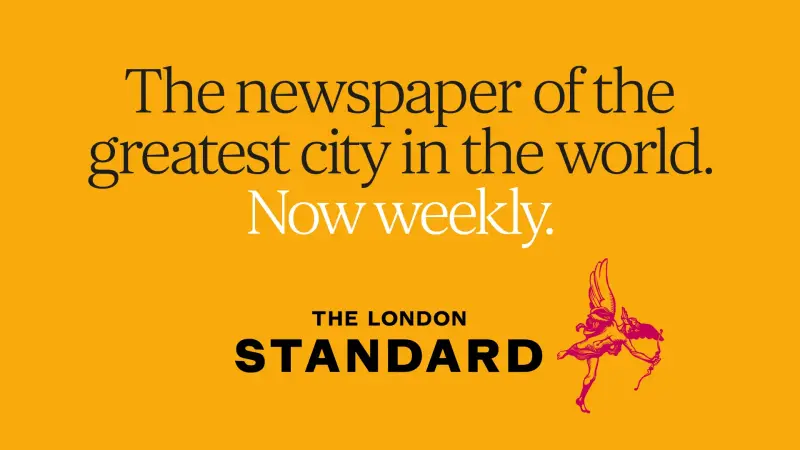
The first edition of the weekly London Standard features an AI-generated picture of Prime Minister Keir Starmer on its front page.
The magazine-style cover features a disclaimer in the bottom left to say: “Image of Keir Starmer created by AI.” The picture accompanies a feature about London’s potential as an AI capital, written by political editor Nicholas Cecil.
It fits what Paul Kanareck, the Standard’s interim chief executive, told Press Gazette earlier this week about the title’s intentions to experiment with AI.
The first edition of The London Standard also features a review of the current Van Gogh exhibition at the National Gallery written by AI in the style of the newspaper’s former art critic Brian Sewell, who died in 2015.
Kanareck said: “The London Standard is a bold and disruptive new publication. The first edition has multiple features on AI and London’s central role in this tech revolution.
“It includes an experimental AI review by our legendary critic Brian Sewell, and his estate are delighted.”
He added that the Sewell review was “a one-off intended to provoke discussion about AI and journalism”.
The article – which does not appear to have been published online – appears with a note stating that it had been created “with the permission of his estate” and that the Standard had made “a donation to a charity of the Sewell estate’s choice”. It is presented alongside an extract from an actual Van Gogh exhibition review that Sewell wrote for the Standard in 2010.
The opposite page from the review features an advert for proprietor Lord Lebedev’s podcast “Brave New World”, asking: “Is AI the future of healthcare?”

Further inside the paper also features an “advertisement feature” sponsored by Samsung “and AI are supercharging creativity and transforming the everyday”.
Among the writers of the first edition advertised on the front cover is George Osborne, the former Conservative chancellor who edited the Evening Standard between 2017 and 2020.
The first edition of the weekly paper runs to 64 pages. The penultimate edition of the daily Evening Standard was 36 pages long.
Among the publication’s new features is a “cheat the week” feature listing the seven “biggest news stories around the world right now” on a map and rounding up editorials from other publications, as well as interviews with musician FKA Twigs and author Deepak Chopra. It retains the longstanding Londoner’s Diary, in this issue spotlighting a series of party pictures from the past week and comments made by Emily Maitlis about the production of the newly-released drama series about her Newsnight encounter with Prince Andrew, A Very Royal Scandal.
The Evening Standard first revealed in May that it would go from being a daily paper to putting out a weekly edition after suffering six straight years of losses. Kanareck told staff: “Shorter commuting weeks, widespread Wi-Fi along our commuting routes and the desire for our readers to consume ever-richer content across a variety of platforms and devices, all make evolution a prerequisite of viability.”
At the end of July it began winding down its print output, cutting the Monday and Friday papers. The last edition of the ES Magazine went out on the 12 September, with its potential print future currently unclear, and last Thursday (19 September) was the paper’s final edition before becoming The London Standard.
About half of all editorial jobs at the Standard were cut as a result of the changes, amounting to about 60 people.
Some 150,000 copies of The London Standard will be distributed across London every Thursday from 4pm (a later time than the previous daily paper which could be found from around 2pm) and remain available until Sunday night. The distribution bins are now co-branded with business newspaper City AM, which is taking up the vacant space from Monday morning until Thursday lunchtime.

The publisher has estimated that each copy will be read by 2.5 people, making a total readership of 375,000.
Editor-in-chief Dylan Jones said: “We are embarking on an incredibly exciting new journey, and I am convinced that the latest iteration of the Standard – in print, online, on social – is a manifestly important addition to London’s media diet. A diet that the Standard has owned for nearly 200 years.
“The new weekly print publication is an upmarket celebration of the city in all its glory. We will be delivering quality at scale for a culturally savvy, desirable audience. London remains the greatest city in the world, and we will continue to reflect that. Every Thursday the Standard will be reinventing London.”
The London Standard’s launch is being publicised with a campaign featuring more than 700 roadside and digital screens across London as well as on digital and audio.
The publisher gave a brief to design consultancy Mark Porter Associates to “emphasise this future facing evolution of the print news model in a fast-changing market, whilst respecting the brand’s iconic 200-year history”.

Standard executive chairman Albert Read said: “Today’s launch of our premium weekly newspaper, The London Standard, is an exciting evolution that will ensure our continued success and relevance in a rapidly changing media landscape.
“The Standard is London’s most powerful voice, its most loved and trusted news brand, and its readers are some of the most desirable consumers in the world. I’m extremely proud to be part of the next stage of its evolution.”
And chief commercial officer James White said: “It’s a big day for London and a big day for The Standard. We’re thrilled to be marking such a momentous occasion with a huge multi-media campaign across the best city in the world. We can’t wait to showcase all that we have to offer to our valuable readers and advertisers alike.”
Email pged@pressgazette.co.uk to point out mistakes, provide story tips or send in a letter for publication on our "Letters Page" blog
